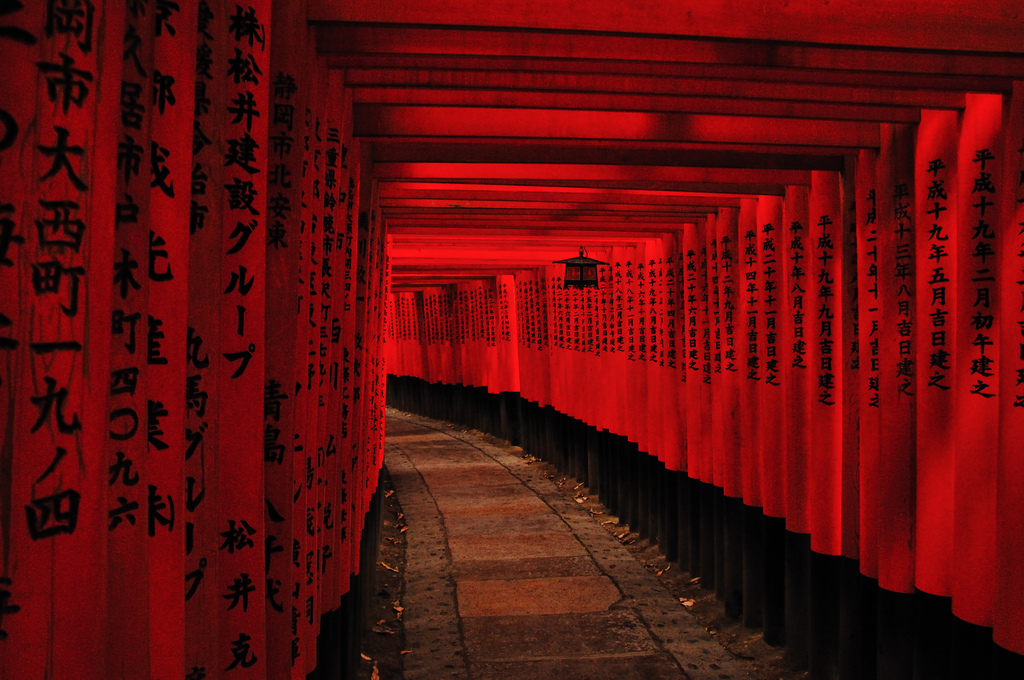
Fushimi Inari Taisha 伏見稲荷大社
Inari-sama, the god of rice, has traditionally been one of the most important gods in the Shinto pantheon. He is also known as a patron of business, so even today has an important role in Japanese culture. Though there are over 32,000 small Inari shrines scattered across the country, the main one is located in Fushimi, just outside of Kyoto.
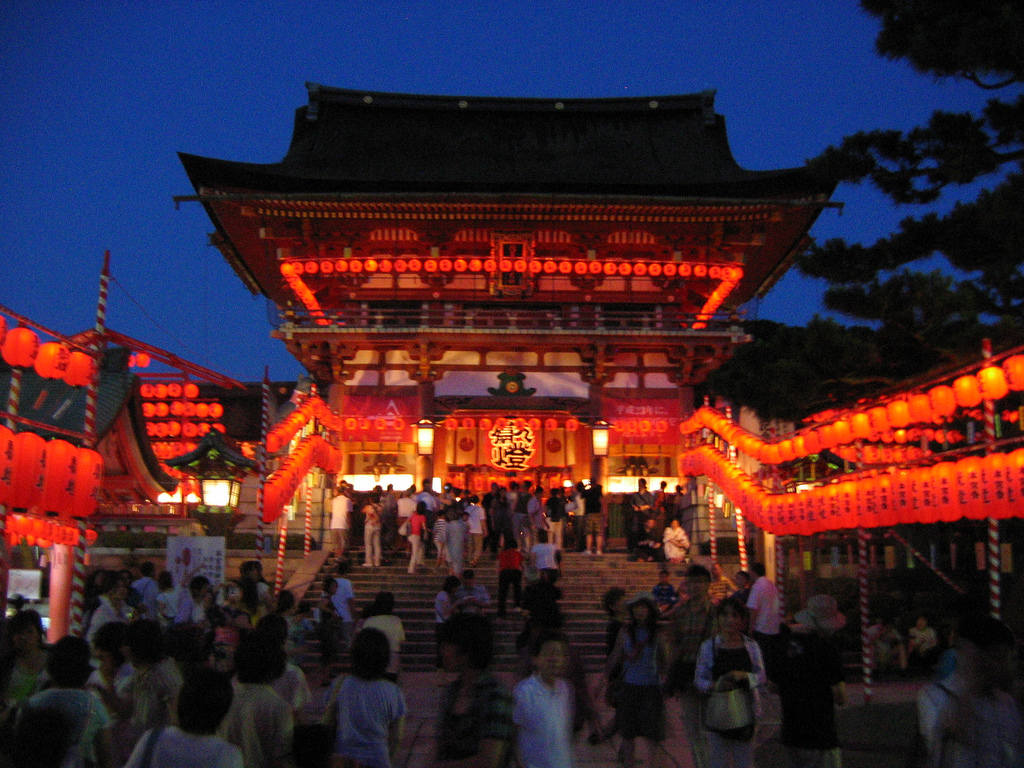
Fushimi Inari Taisha at night
The Fushimi Inari Taisha (伏見稲荷大社) Shrine has ancient roots, with references back to 711. The main structure was built in 1499, and the elaborately ornamented main gate was donated in 1589. The most notable feature is the extensive network of hiking trails up Inari Mountain which are bordered by literally thousands of vermilion torii gates. In some places they are dense like tunnels, in other areas they are spread out. These torii are donated by businesses from all over Japan. Another unique feature is that the object which serves as a focus for the god, a mirror, is visible to the public instead of being hidden in a special, decorated box.
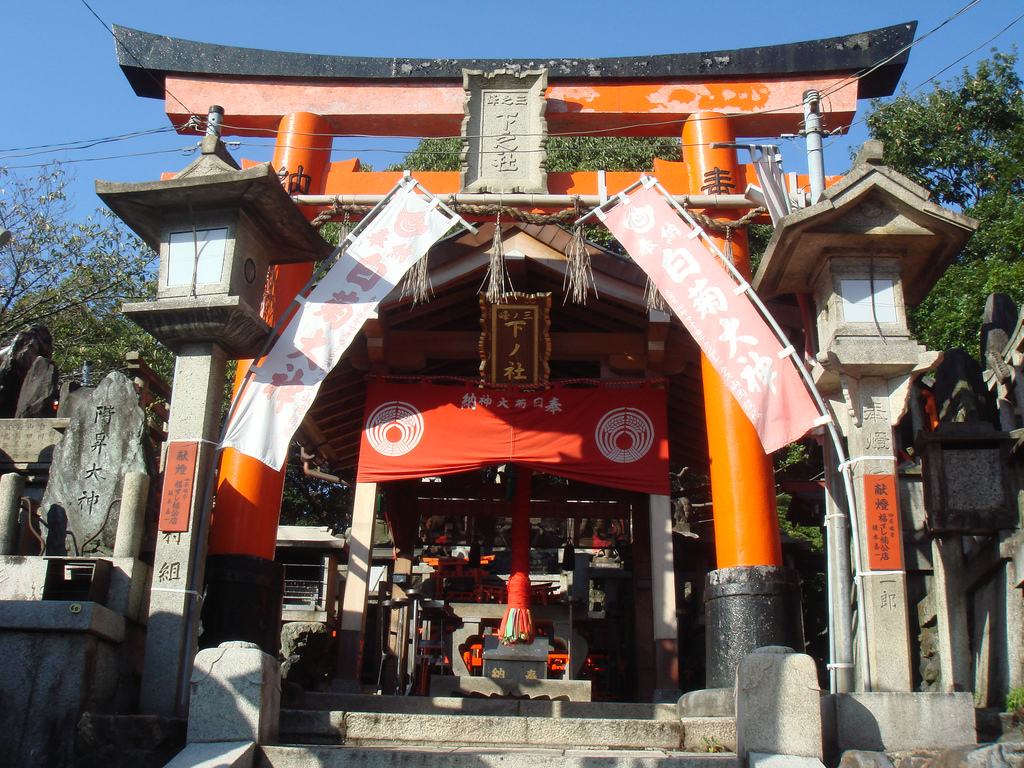
Fushimi Inari taisha
The main shrine is at the base of the mountain, and the paths lead to many smaller sub-shrines. There is a small lake about halfway to the top, which is a pleasant place to rest. The top commands a beautiful view of the valley below. There are several little restaurants along the way which serve simple meals such as kitsune udon, or “fox noodles,” so called because the deep-fried tofu is said to be a favorite treat of foxes.
This video produced by TVShinjuku is a great view of the Fushimi Inari-taisha temple in Kyoto taken during Golden Week (Spring) spotlighting the famous Tori gates.
You will also notice many fox statues, because they are the messengers of the god Inari. Some carry a key in their mouths, which represents the key to the rice granary.
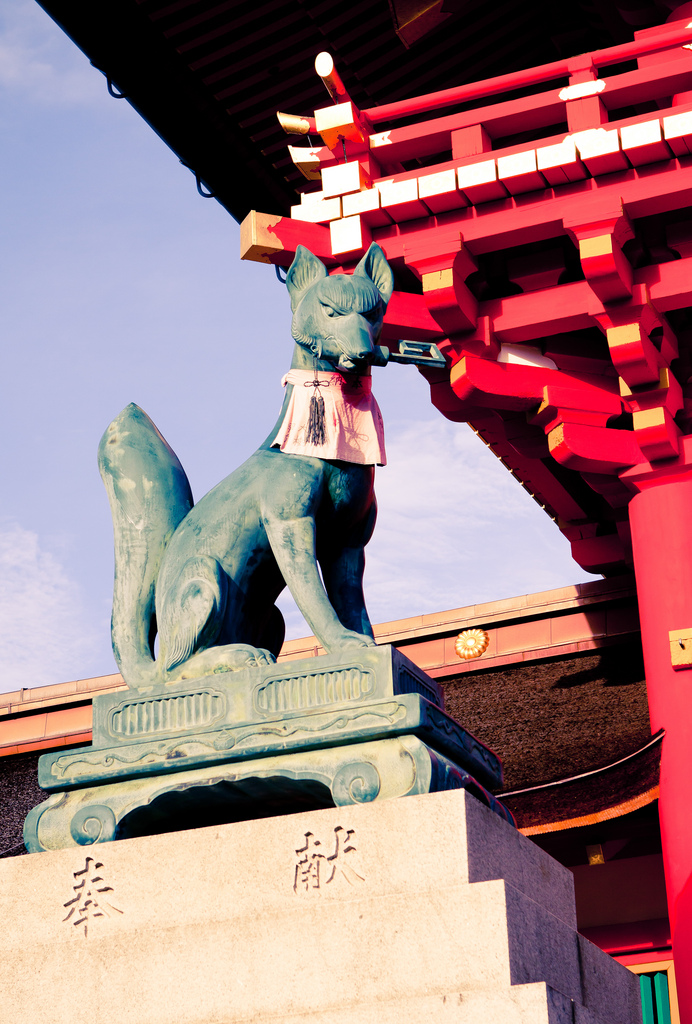
Fushimi Inari taisha
There is no cost to visit Fushimi Inari Taisha, and the trails are open from dawn to dusk. It is possible to visit at night, though the shrine buildings are closed. The trails are illuminated with small lights, which give a somewhat mysterious feel. In folklore, the fox statues are said to come alive and cause mischief, so even now very few people visit after dark.
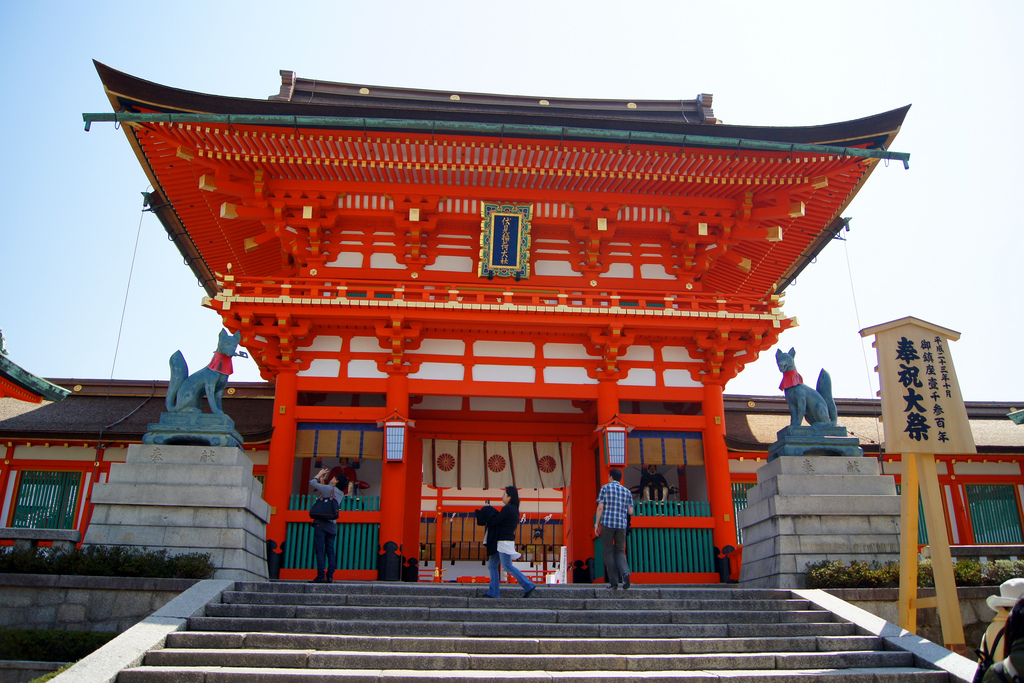
Tempio di Inari (Fushimi Inari-taisha)
The shrine is only a few minutes walk from the Inari Station on the JR Nara Line. Beware that the trails are uneven and consist mostly of steps, so it is not wheelchair or stroller accessible.